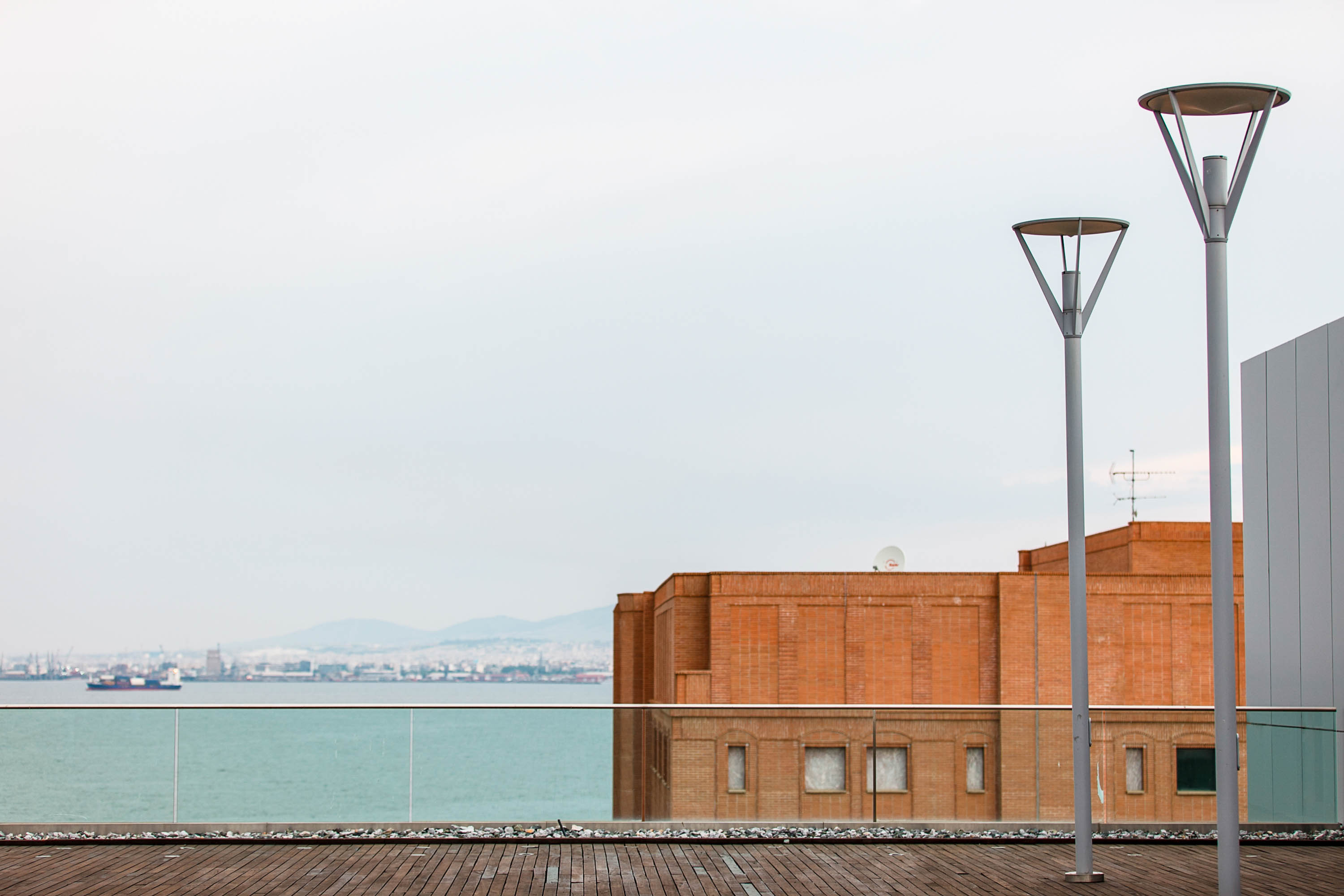City Walks: Nea Paralia – Vasilissis Olgas Avenue
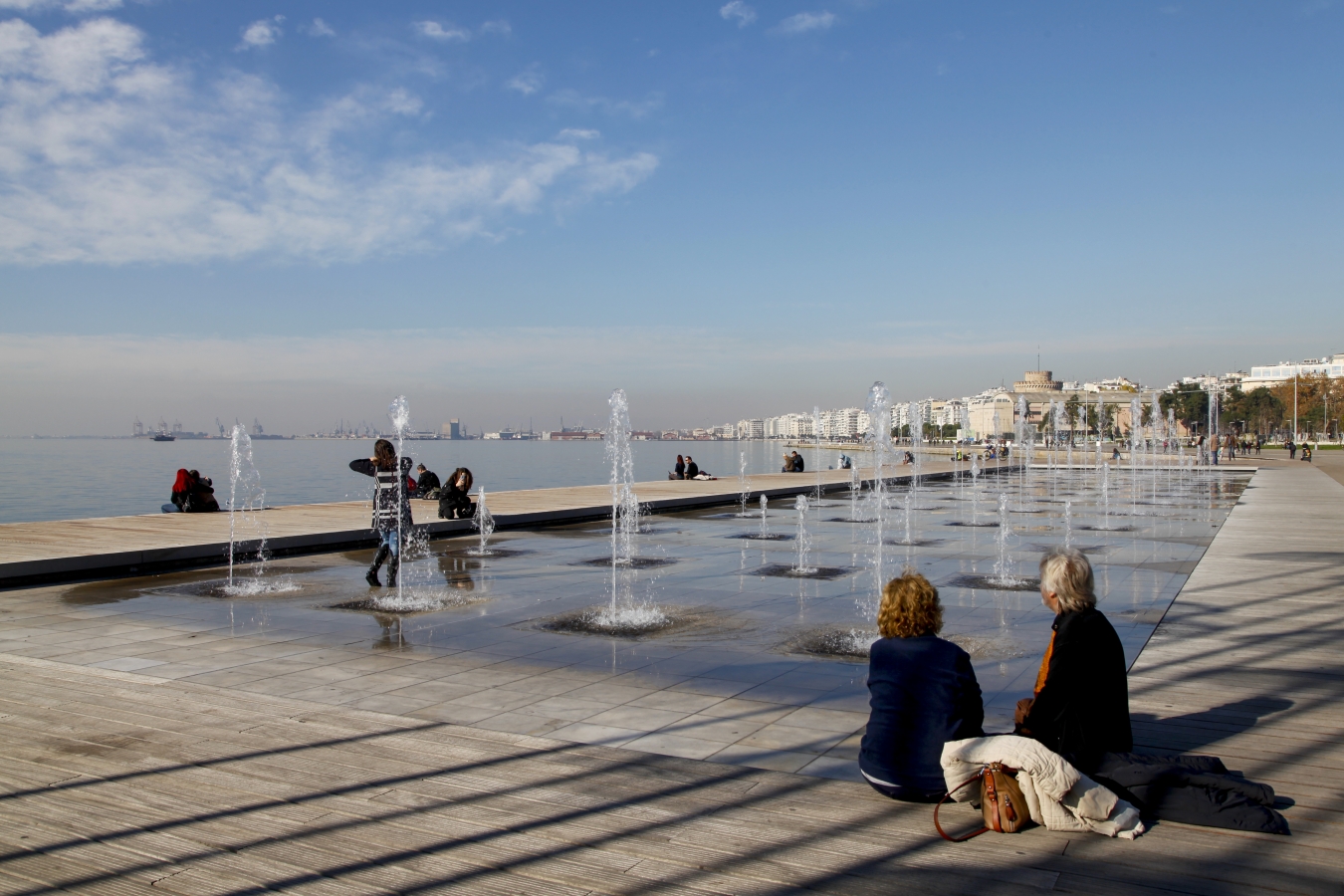
The area started to grow in the late 19th c., after the demolition of the eastern city walls and the adoption of the tramway (horse-drawn in 1893 and power-driven in 1907). Its first name was Exohes [meaning Countryside], on account of its rural character, or the Villas quarter, as luxury residencies with large gardens began to emerge following the European standards of the time. Contrary to the way life used to be within the city walls, various nationalities namely Greeks, Turks and Jews coexisted in this area, with wealth as their sole standard in life. From the 1930’s the area gradually fell into decline and from the 1960’s onwards it evolved into a typical urban area.
NEA PARALIA
It took its present shape in the 1960s. It stretches along Megalou Alexandrou Ave. from the White Tower (see p. 24) all the way to the Thessaloniki Concert Hall and it is one of the most popular parts of the town for exercising, strolling and other forms of leisure. Thessalonians can be seen here 24 hours a day, particularly on weekends. Furthermore, its orientation offers a fascinating view of the Thermaic (Thermaikos) Gulf and Mount Olympus, especially during the sunset.
MUST SEE
- Monument of Alexander the Great
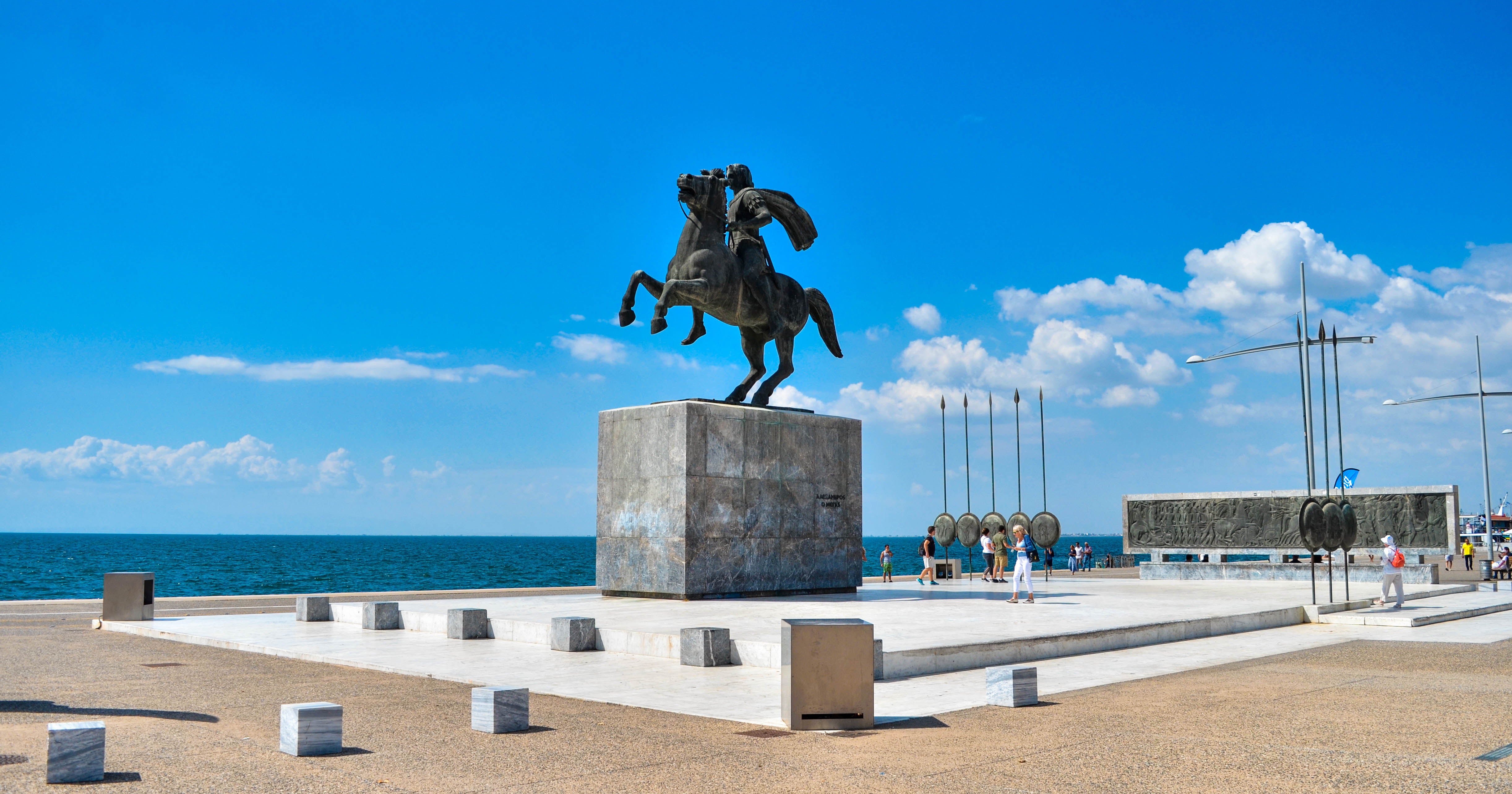
This monumental sculptural synthesis (E. Moustakas, 1974) commands the waterfront right next to the White Tower and the Royal Theatre (see p. 25). The equestrian statue of Alexander the Great (6 m. high and 7 m. wide) is fixed on a base; there is a frieze around it with an embossed depiction of the battle of Issos (333 BC) as well as 8 Macedonian shields with even-numbered spears. Within a short distance you will see the statue of the Macedonian politician Konstantinos Karamanlis (1907 – 1998) who served as Prime Minister of Greece for 14 years in the post war period and as President of Greece for 10 years. The Monument of National Resistance is also nearby (1989, E. Moustakas).
- Makedonia Palace Hotel
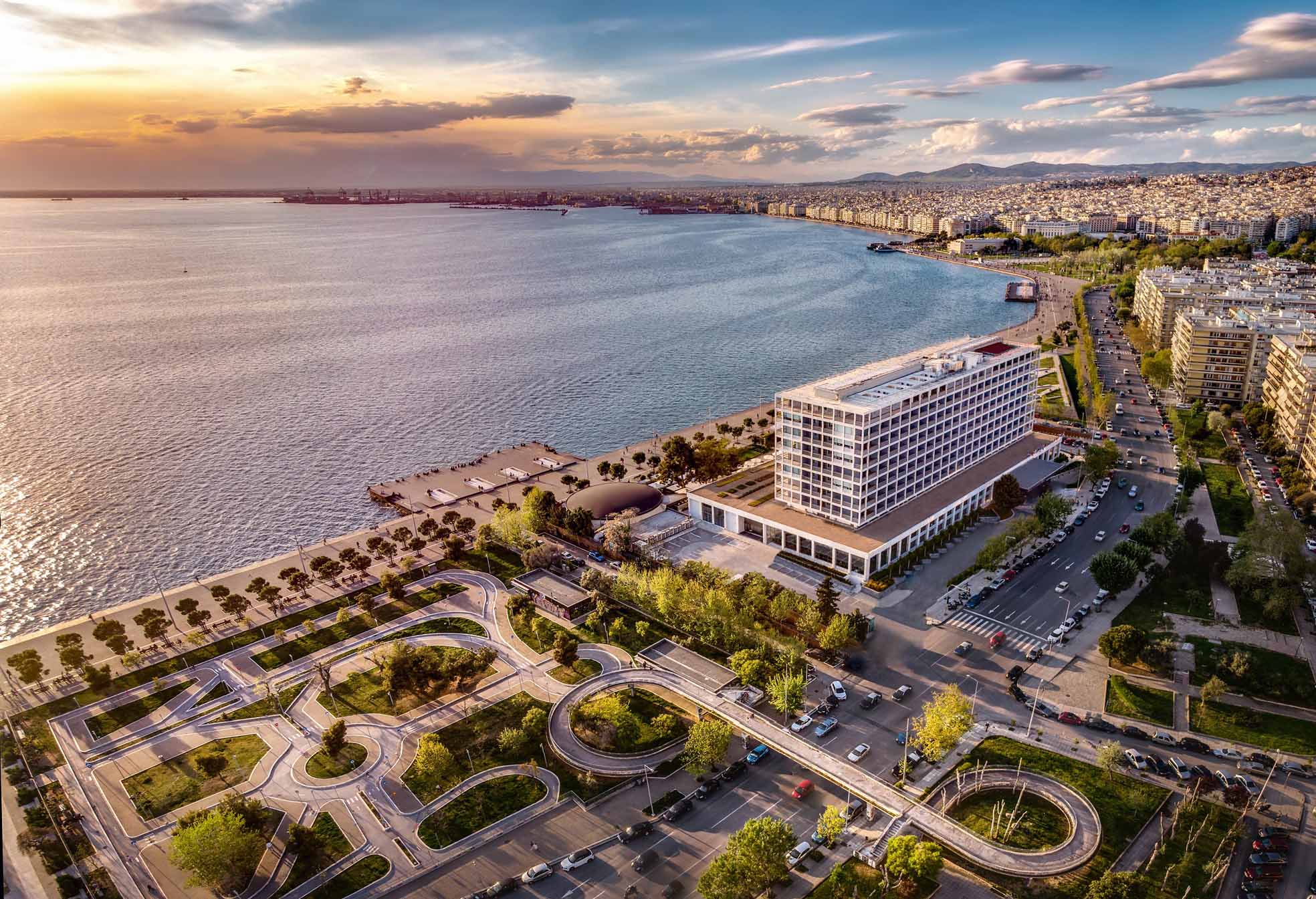
One of the landmarks in Thessaloniki’s urban planning is this hotel built in the 1970’s on a privileged location. The place was fully renovated in 1995 and in 2003. It is considered one of the top luxury hotels in Greece. It is also the regular choice of stay for the prime minister and ministers while attending the Thessaloniki International Trade Fair; among its clientele are also many Greek and foreign personalities (politicians, artists etc.).
- Umbrellas
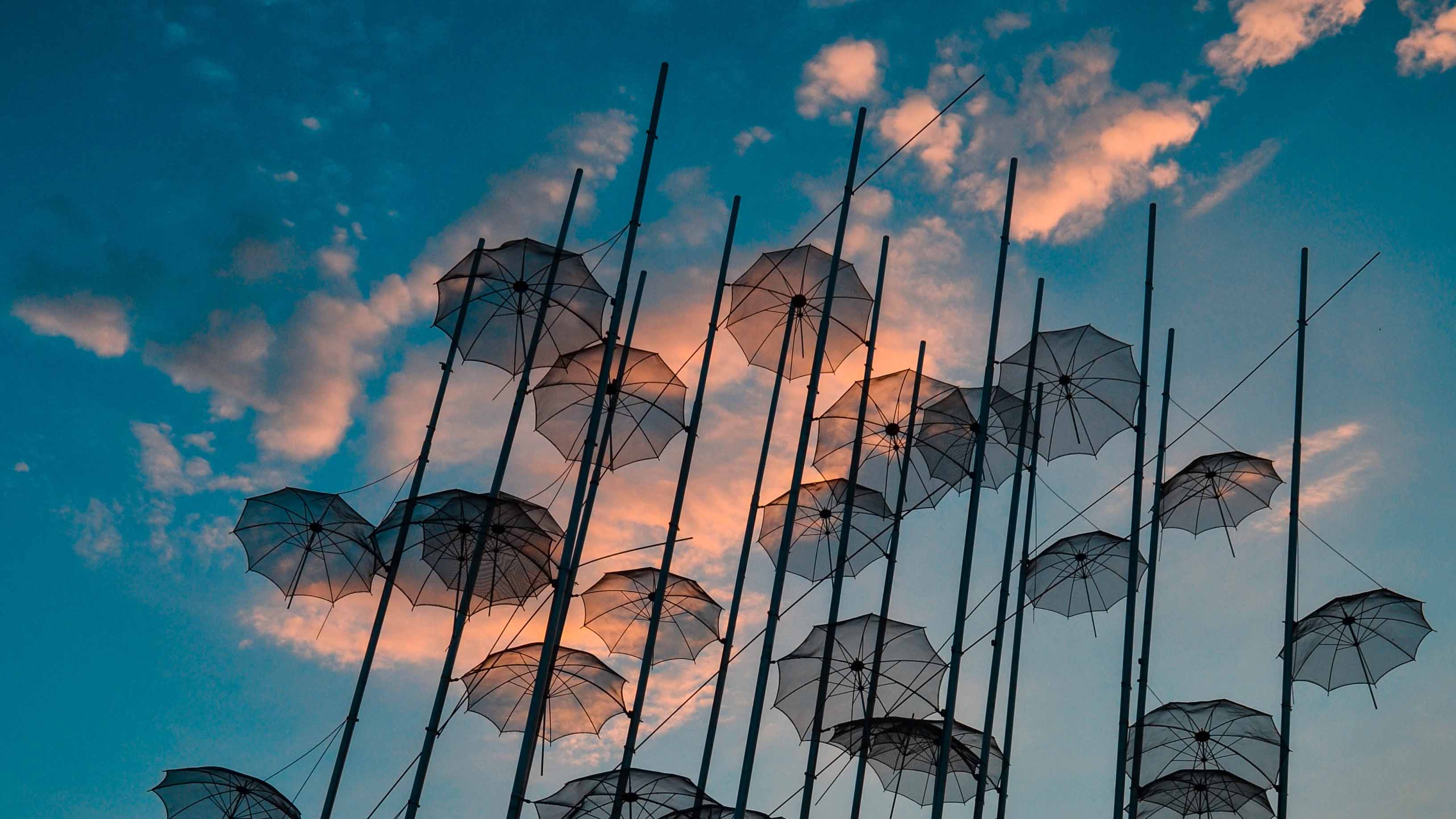
This emblematic sculpture (height: 13 m.) created by the significant Greek visual artist George Zongolopoulos, was fitted in place in 1997; another of his sculptures by the same title is decorating the entrance to the Macedonian Museum of Contemporary Art, (see p. 31). In 1993 this piece of art represented Greece in the Venice Biennale. It is one of the newest and most photographed monuments of the city.
- Saints Cyril and Methodius Church
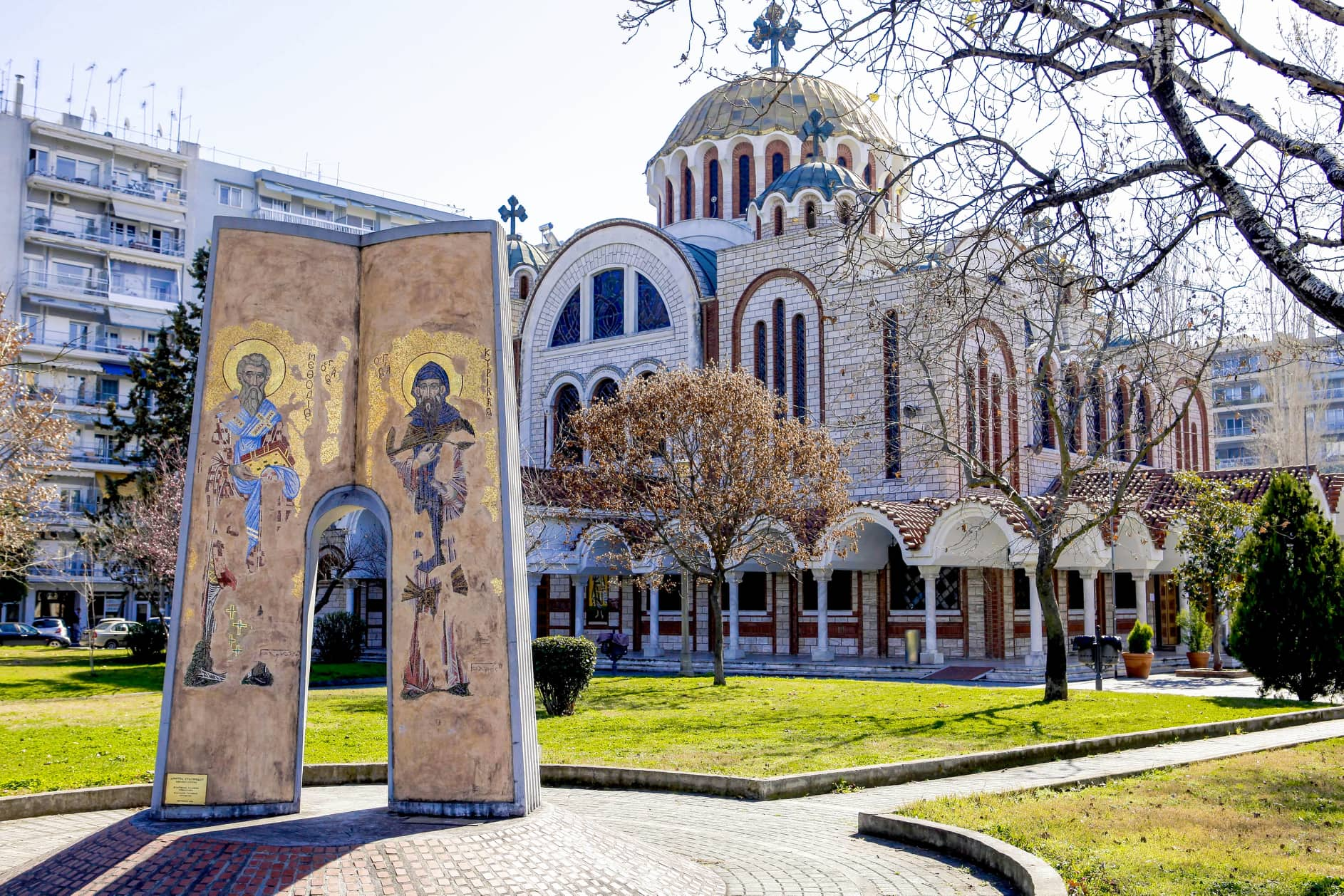
This imposing church (on Megalou Alexandrou Ave.) is among the city’s newest and is dedicated to the two brothers who contributed decisively in bringing Christianity to the Slavs in the 9th c. and devised a new type of writing in the Slavic language. A well-tended garden surrounds the church.
- Theme gardens
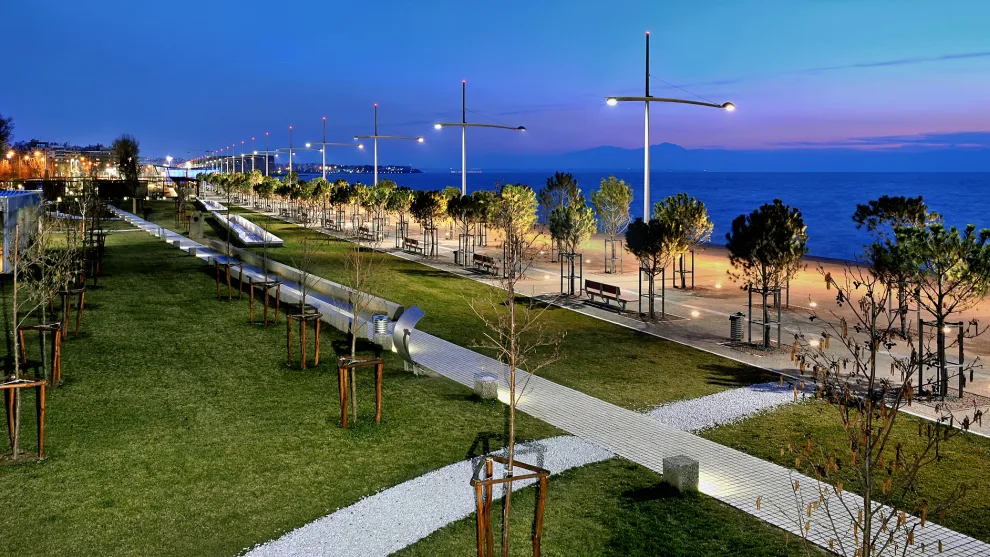
Along Megalou Alexandrou Avenue towards the direction of the sea, 12 Theme Gardens cover an area of 76,657 m2 and are just the ideal place for spending your leisure time, strolling or relaxing. They are as follows: Garden of Alexander; Garden of the Afternoon Sun; Garden of Sand (with a café, tennis courts and a playground); Garden of the Seasons (includes an amphitheater open for various events and a café); Garden of Odysseas Fokas (playground inside); Garden of the Mediterranean (café included); Garden of Sculptures (outdoor contemporary art sculptures); Garden of Sound (with flowing waters); Garden of Roses (with ornamental flower beds and a playground); Garden of Memory (with basketball grounds and tennis courts); Garden of Water (you will see lakes with plants growing in water, a small waterfall and a skatepark); and Garden of Music with a space reserved for music events. You can also ride along the area’s 3 km cycle path. This is also the location of the Nautical Club of Thessaloniki.
- Thessaloniki Concert Hall
It was inaugurated in 2000 on a privileged location. The town’s Byzantine history was the source of inspiration for its architectural planning and it is one of the best equipped concert halls in Europe. The facilities include a hall providing seating for 1464 where concerts, dance and opera performances as well as conferences are held, and a restaurant. The neighbouring 2nd building of the Concert Hall (designed by Japanese A. Isozaki) includes halls for concerts and conferences, a Museum of Musical Instruments and a Music Library. The Poseidonio Sports Centre is located nearby.
DEPOT AREA
The area was named after the site of the tram depot buildings and this complex has been listed as a Historic Monument, situated at the corner of Vas. Olgas and Typa Streets. The tram used to connect the city center with this area from 1893 until 1957. It is the easternmost part of the Exohes area [meaning Countryside] where traces of its older atmosphere still remain in several places.
MUST SEE:
- Allatini Mills
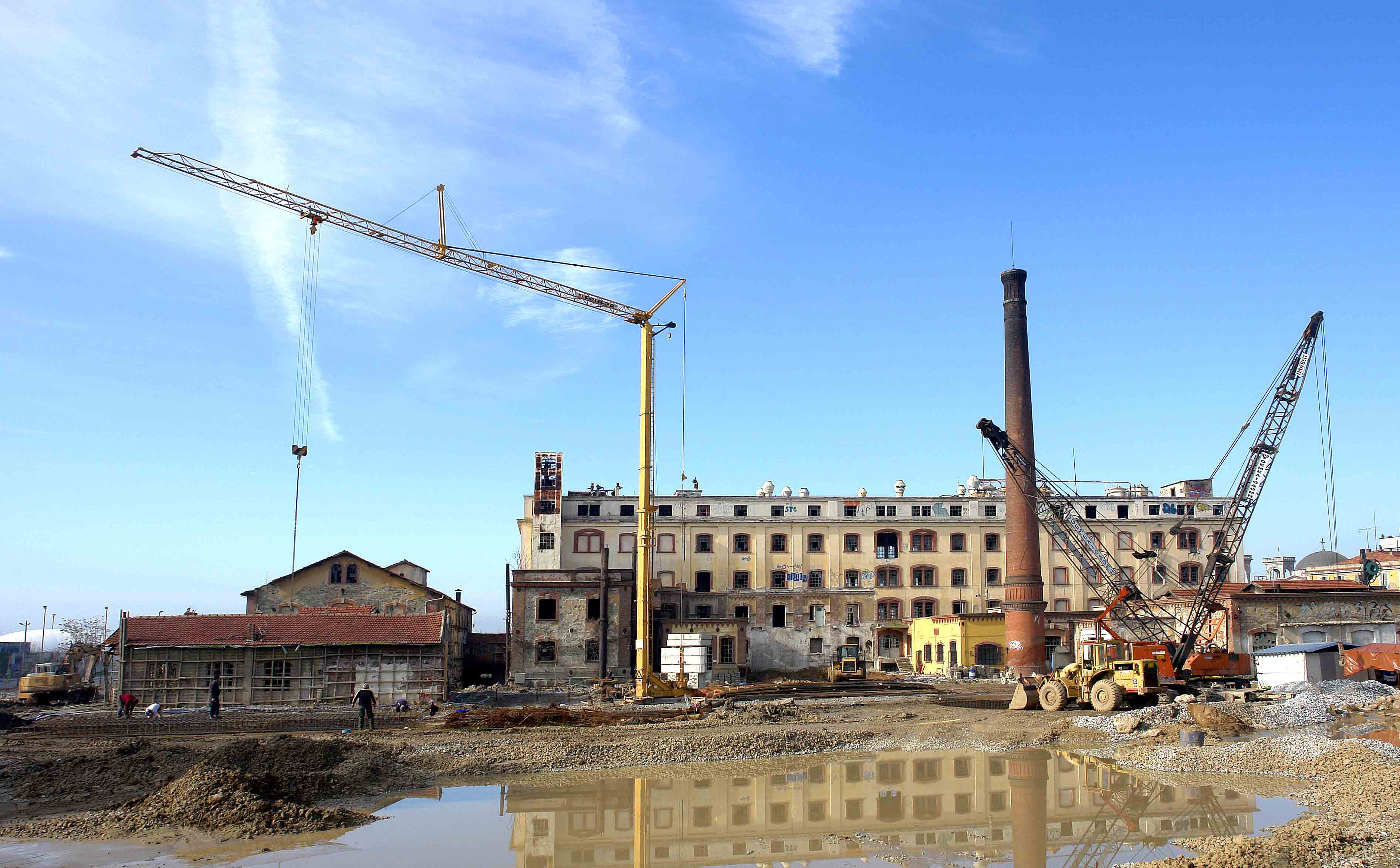
Deserted since 1990, this complex of 14 listed industrial buildings is quite impressive. The complex’s construction date is 1854 and the town’s first steam-driven flour mill was located by the sea. Originally under French ownership, they became property of the Allatini family in 1882.
- Vafopouleio Cultural Centre
Two contiguous buildings form this structure which was inaugurated in 1983 by the Municipality of Thessaloniki. The Centre hosts visual art exhibitions, theatre and music performances as well as discourse events. Other facilities include three libraries one of which is a Children’s library which contains over 14,500 volumes.
- Ouziel quarter
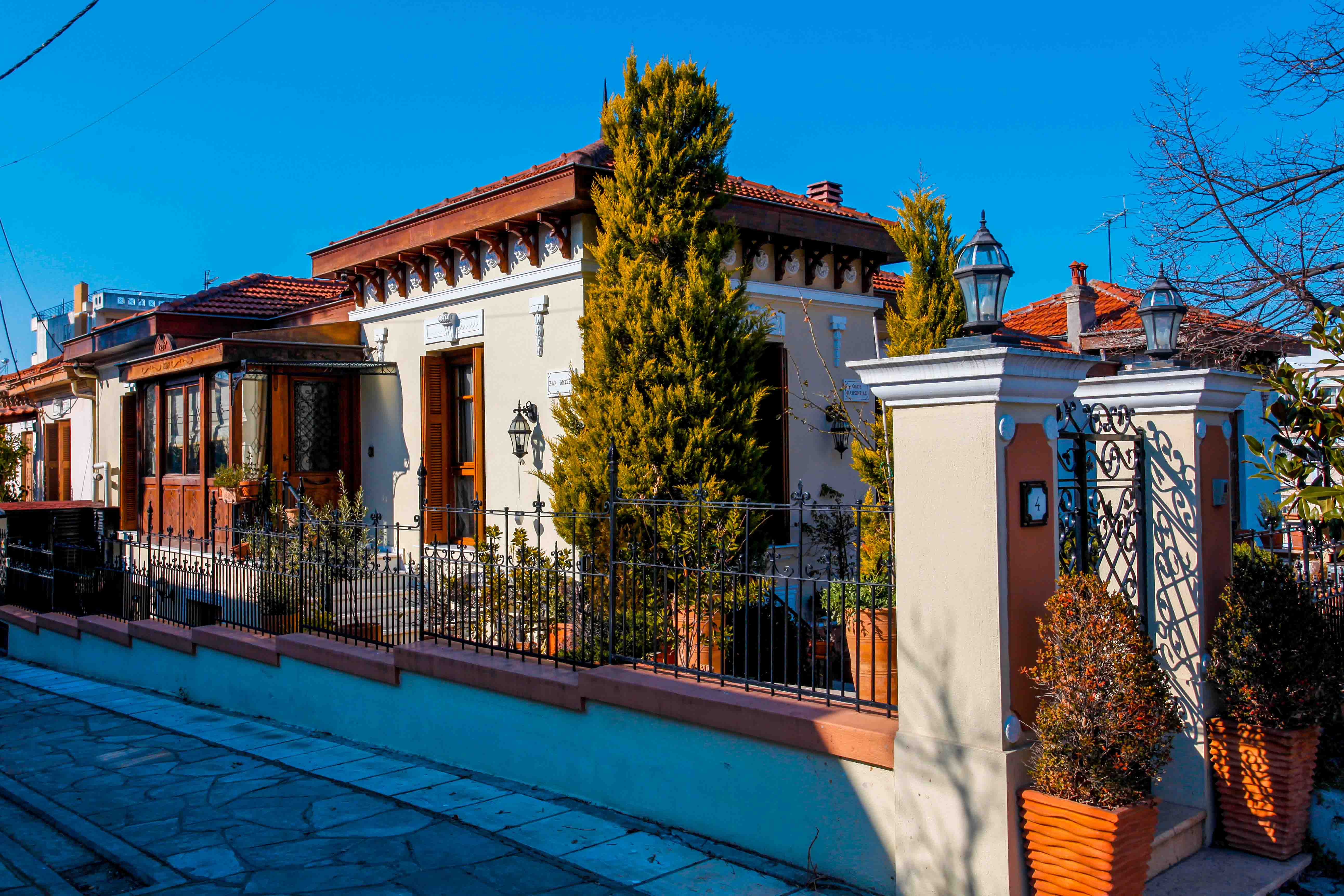
This complex of very picturesque semi-detached houses (defined within Papandreou, Ploutonos, Chaironeias and Dimitrakopoulou streets) were built to house the workers employed in the tramway construction and was named after the French contractor Ouziel. In 1985 it was declared a protected architectural monument and in recent years a new generation of residents occupies the area. Built in the early 20th c. as a private residence, the neighbouring Zardinidi Villa (or Morpourgo) houses the School of Music Studies, the Conservatoire of Northern Greece and an open-air bar
- Sofouli Street
This main road connects the eastern districts of the Municipality of Thessaloniki with the district of Kalamaria (see p. 64). Along most of the way it is lined with trees in front of shops, cafés and restaurants – a hotspot for the locals; the seafront section of the road affords a lovely view of the city and you will also find cozy little bars and ouzo tavernas there. Between Logothetou and Rossidi Streets notice the complex of four detached houses with a garden, which bear a direct reference to that area’s past countryside atmosphere.
VASILISSIS OLGAS AVENUE
It used to be called the Countryside [Exohon] avenue or the Villas [Pyrgon] avenue and it was a favorite promenade area for the Thessalonians as it was built along the waterfront amid green surroundings. Nowadays, it is a busy street along which Depot, Analipsi, Salamina and Faliro Districts extend from the east towards the city centre. Despite the area’s urbanization, you will still see here several impressive buildings dating to the late 19th – early 20th c. which paint a vivid picture of its older character and continue to be one of the best promenade places in town.
MUST SEE
- Allatini Villa
This impressive red brick mansion is surrounded by a large garden and was built in 1898, to plans by V. Poselli, as a country residence of K. Allatini, owner of the Allatini business establishment. The Ottoman Sultan Hamid II was confined to this place for three years, after the Young Turks Movement took power in 1908. In 1926 the then newly founded University of Thessaloniki was housed in the villa (see also p. 38); during World War II the premises were used as a military hospital. Today it is the seat of the Region of Central Macedonia offices. In the neighbouring Delfon St, at no. 201 you will see another residence dating to the same period.
- Casa Bianca
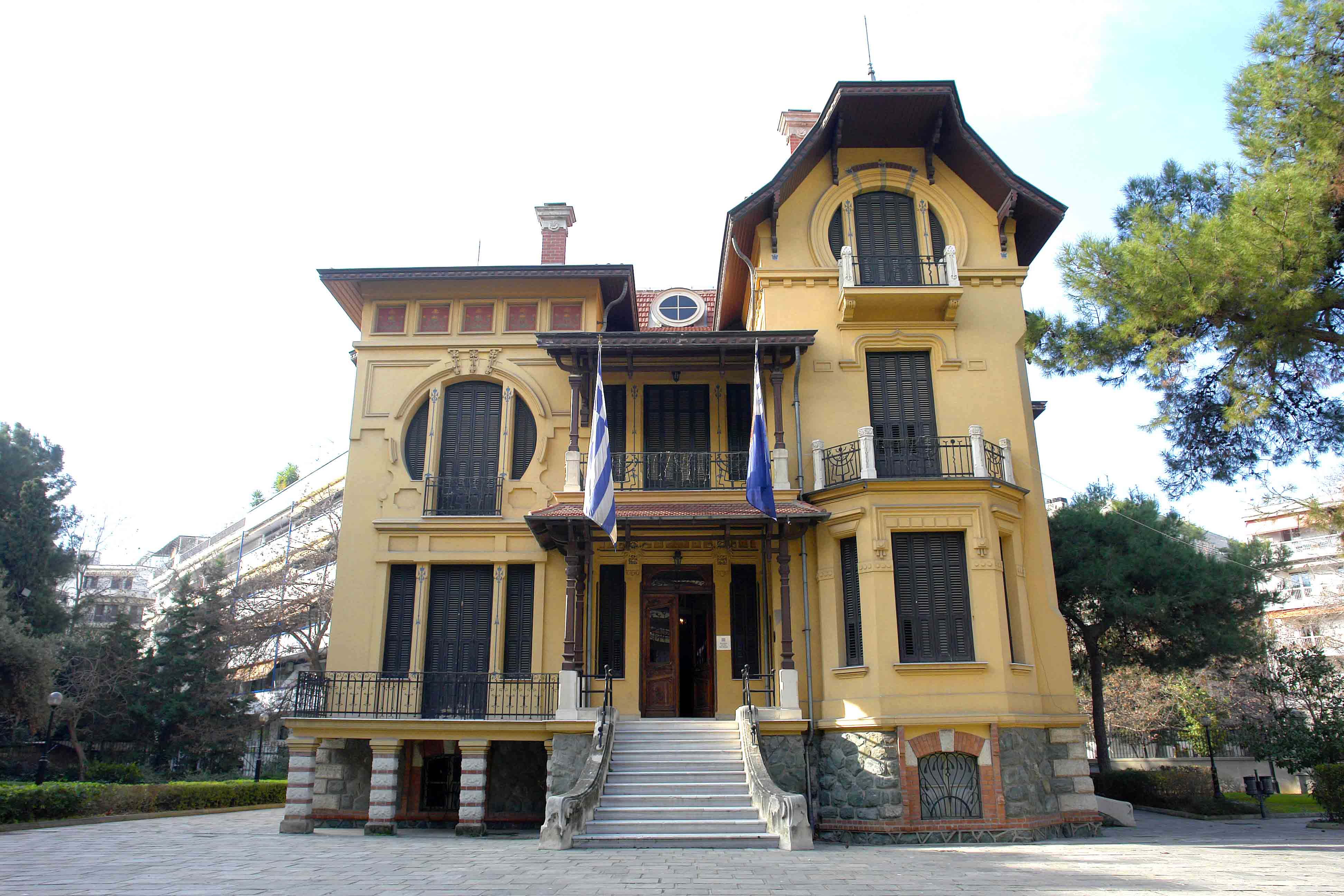
It was built in 1912 by Dino Fernadez-Diaz, to plans by P. Arrigoni, and it was named after his wife, Bianca. The building features eclectic and art nouveau elements and it has been a scheduled one since 1976. Today it houses a branch of the Municipal Art Gallery. At 203, Vas. Olgas Ave. you will come across the eclectic Nehama Villa, which was built in 1907 by Al. Nehama, a banker. It was originally a two-storey building; a third storey was added in 1940-1945.
- Mordoch Villa (Municipal Art Gallery)
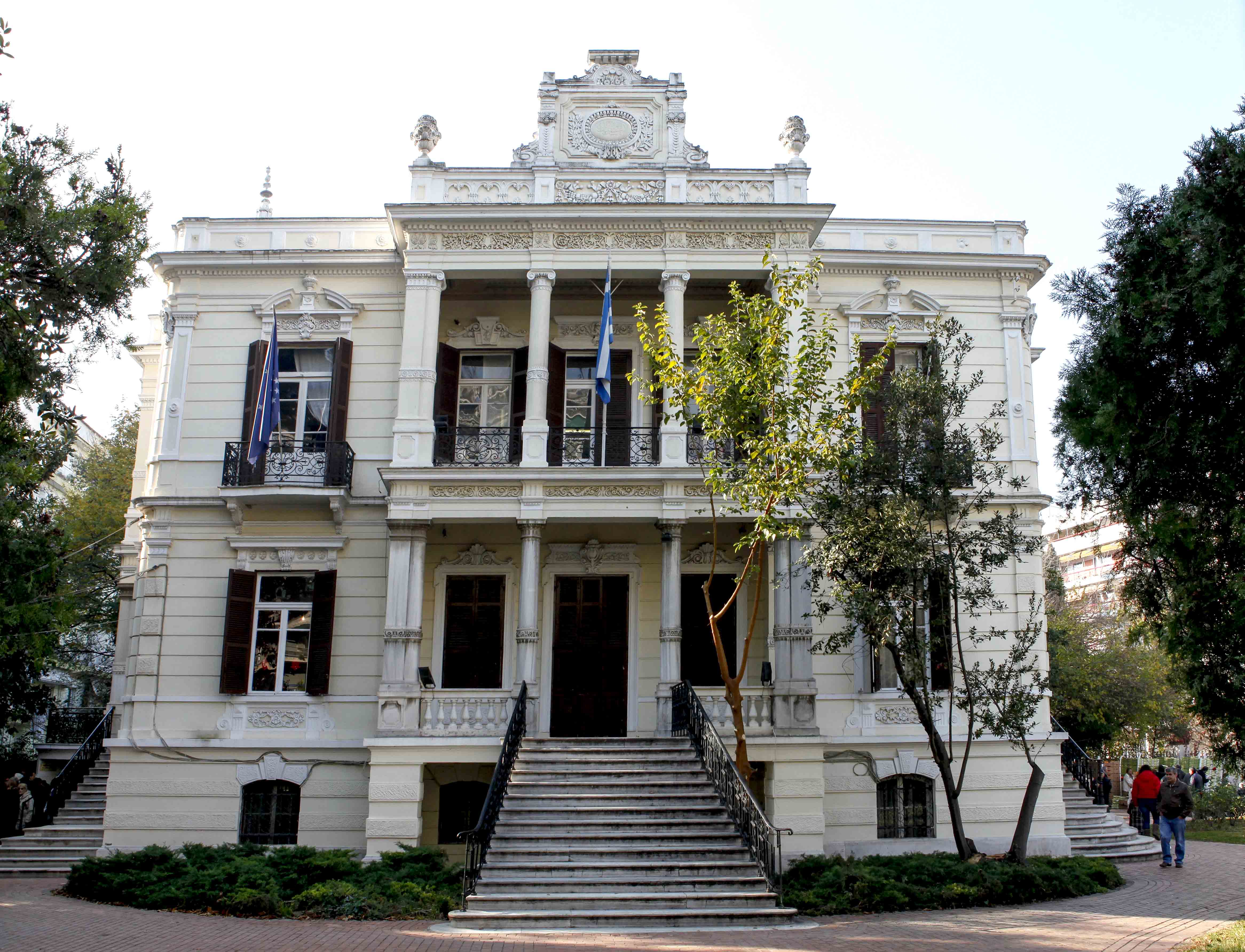
This impressive eclectic style construction (1905, X. Paionidis) is located at the corner of Vas. Olgas Ave. and 25th March Street. It was built as the residence of the Turkish officer Seifulah Pasha, but it became finally known as Mordoch Villa, after the last owner, a Jewish Merchant by the name of S. Mordoch who died in a concentration camp during World War II. It was also used as military barracks and as a polyclinic; since 1986 it houses the Municipal Art Gallery (see p. 76). A copper sculpture by sculptor K. Kampadakis graces its lovely garden. At a short distance, at the corner of Vas. Olgas Ave. and Gravias st., you will see the Hirsch villa (early 20th c., P. Arrigoni), a deserted building which once housed the 1st Police Department. Notice the old pillbox at the end of the yard – a remnant of the Civil War Period (1946 – 1949).
- Chatzilazarou Residence
Also known as Siaga residence, this house was built in 1890 to plans by X. Paionidis. Next to it, you will see the impressive Marokou Residence which was used at earlier times as a boarding school; today it houses a Traffic Police Department. Opposite to it, there is a small garden with a small Roman Catholic chapel dedicated to the Sacred Heart of Jesus.
- Mehmet Kapanci Villa (108, Vas. Olgas Ave.)
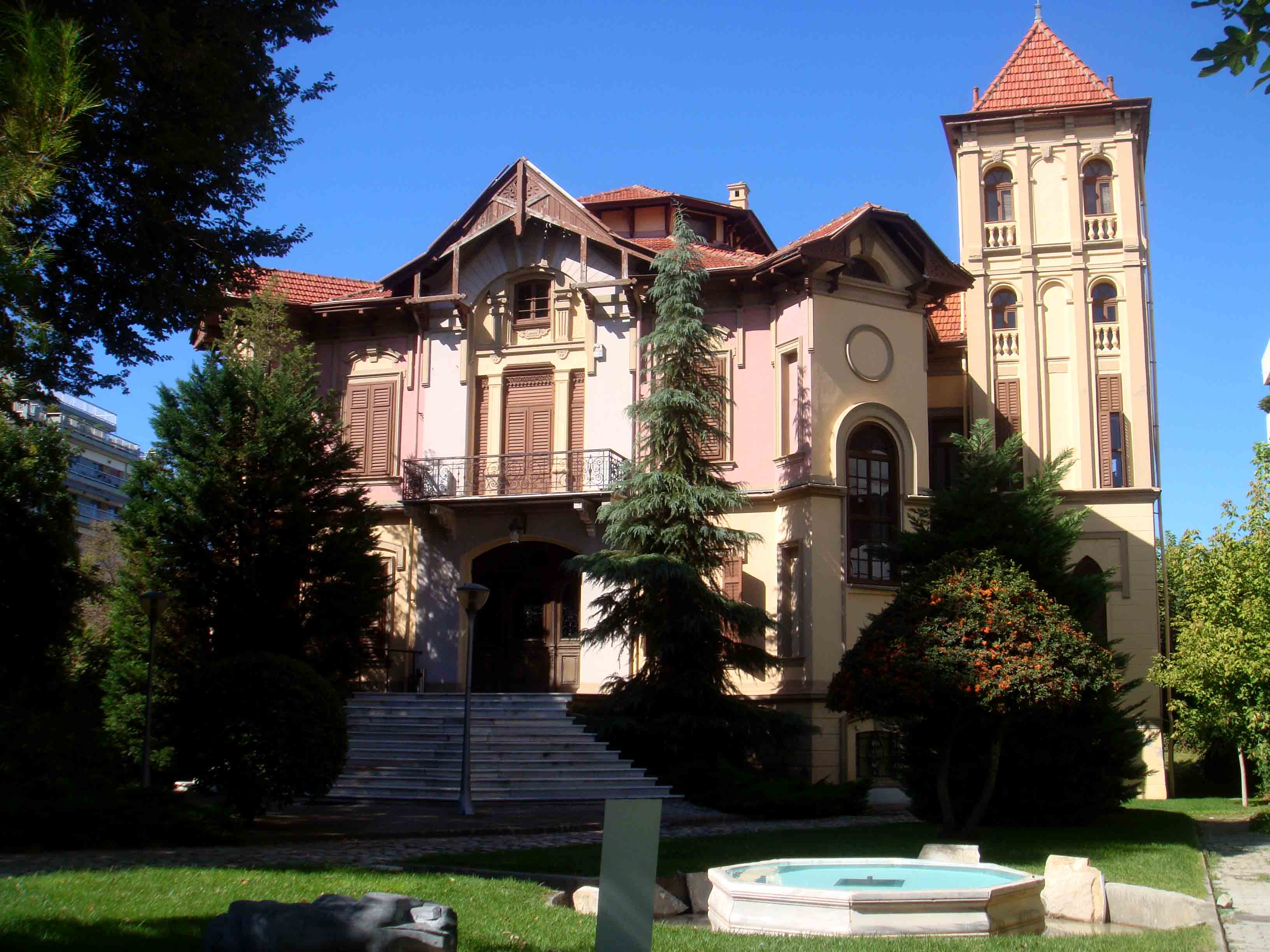
The mansion was built in 1893 to plans by the Italian architect P. Arrigoni, within a 0.4-hectare garden, for Mehmet Kapanci, a Thessalonian Jewish merchant and banker. Following the central European architectural trend of the time, the main building is a three-storey construction with elaborate interior decoration and has access to a tower. Prince Nicholas, the city’s first Greek military commander, was accommodated here in 1912; in 1916-1917 E. Venizelos stayed in the villa as head of the temporary revolutionary Government of National Defence. In 1928 the building was bought by the National Bank of Greece and during the years 1938 – 1961 it housed some of the city’s highschools. Since 1989, this is the location of the Thessaloniki Cultural Centre of the National Bank of Greece Cultural Foundation (MIET, see p. 77). Next to it there is a red brick castle, known as Chateau mon bonheur, dating to 1890.
- Melissa Building (36, Vas. Olgas Ave.)
It was built in 1896 as the residence of a Turkish merchant and in 1908 it was purchased by the Bulgarian government. From 1922 until 1977, this was the location of the Melissa orphanage; since 1978 it houses the Centre for Byzantine Research of the Aristotle University of Thessaloniki. It bears pronounced neoclassical and renaissance features and the ceiling paintings are particularly interesting. There is a small garden around the building.
- Building of the School for the Blind (32, Vas. Olgas Ave.)
It was built in 1907 as a private residence (Hafiz Bey Mansion) and it has been used as a business school and a day nursery. Eclectic architecture elements are combined with motifs relating to late Renaissance. Since 1948 it houses the Ilios [meaning Sun] School for the Blind.
- Ahmet Kapanci Villa (105, Vas. Olgas Ave.)

It was built in 1905 by P. Arrigoni, as a country (seaside) residence for Ahmet Kapanci, a Jewish merchant and Mayor of the City. The architectural style is a mixed one as the eclectic features combine neoclassical, renaissance, art nouveau and gothic motifs. In 1926, the Greek State took ownership and since then the premises housed the Red Cross, the Gestapo, and NATO services until 1973. Offices for the 1997 European Capital of Culture events in Thessaloniki were housed in this villa.
- Folklife and Ethnological Museum of Macedonia – Thrace (68, Vas. Olgas Ave.)
This eclectic building (you will get a better view from Megalou Alexandrou Ave.) was the residence of the banker Jacob Modiano in the early 20th c. In 1913 it was bought by the Greek State, offered to the Greek Royal Family and, later on, it became the residence of the Governor General of Macedonia, a Military School of Medicine and a Seminary. In 1970 it was granted to the Museum and in 1980 the premises were declared a scheduled monument (for museum exhibits, see p. 75). The adjacent noteworthy complex belongs to the Goethe Institut (1929).
- School Building (Ivan Hatzimisef Villa)
It is located on 27, Vas. Georgiou Ave. (Vas. Olgas Ave. changes to Vas. Georgiou Ave.). It was built in 1897 and until a few years ago it housed the 12th Primary School of Thessaloniki. Today it is used by locals as a venue for cultural events, film screenings and so on. Every Saturday, an organic food market is set up there. At 29, Vas. Georgiou Ave. you will see Navarro Villa, another interesting building which in recent years has been housing the head office of a private company; the Hatzimisef brothers villa at 25, Vas. Georgiou ave. is also worth noticing.
- Yeni Camii (New Mosque)
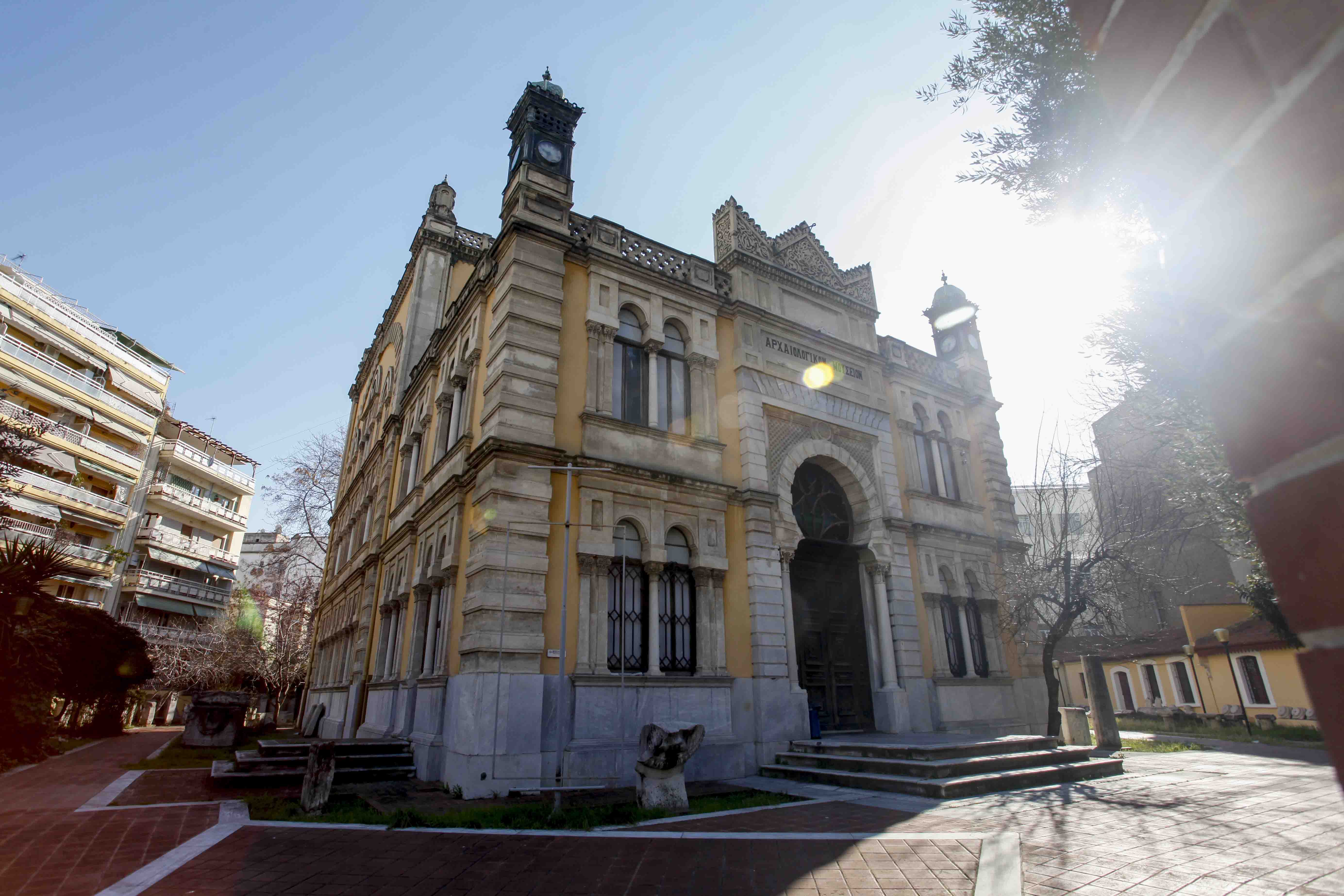
It is located at 30, Archaeologikou Mouseiou Street. It was built in 1902 by the Italian architect V. Poselli as the mosque for Jews converted to Islam (Donmeh). It combines features of the Muslim architectural tradition and eclecticism. In 1922 the building provided accommodation for refugees and during the period 1925–1963 it housed the city’s Archaeological Museum. It is now a municipal exhibition area; in the yard there is a collection of marble sculptures dating to Roman and Early Christian times (sarcophagi, stelae and others), collected from the wider urban area.
- Hatzimisef Villa (3, Vas. Olgas Ave.)
This is yet another building typical of the style found in the area, housing the town’s 1st High School. At no. 5, lies the Joseph Modiano villa, today uninhabited and barely discernible behind the fencing. A branch of the town’s 1st High School was once located here. 3.14 Bust of George I. It is found at the corner of Vas. Olgas Ave. and Agias Triadas St. This is the spot where King George I was assassinated on March 5, 1913 by Al. Schinas, a 43-year old teacher. Crafted by sculptor K. Dimitriadis in 1915, this piece of art is the first sculpture to be placed in public space in free Thessaloniki and it is considered as one of the finest in town.

